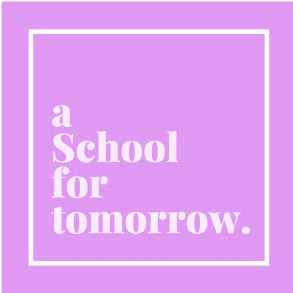Game Changers | Lead | School Strategy
Going the Way of School Strategy
Going the way – the critical practice of strategic competency – means the way we create the impetus, rationale, agency, efficacy, and architecture by which we realise the intellectual property of a school. It’s all about “knowing the way.”

Strategic impetus means responding to the real state of play in 21C by moving forward to reinvent education. Since the turn of our century some two decades ago, progressive educators and provocateurs such as David Warner in Schooling for the Knowledge Era (2006) have urged us to take seriously the challenge for schools to play a leading role in developing the innovation and creativity that fosters the individual talent and risk-taking required to help schools shift in their thinking and practice to predict the needs of the future, as opposed to waiting to be compelled to respond to fundamental social change. In this respect, your role is to align yourself with a future focus of your school that seeks to reinvent education, rather than replicate the past.
This requires a school, initially, to build the institutional will to do this work. There is a strong correlation between great schools and schools which build their foundations for the right way forward on an education for and also in step with the holistic nature of the character and competencies that most effectively express the best of humanity in our times. Such schools are prepared to design and deliver a whole education for character as an aligned and intentional educational process that develop answers for questions such as the following:
- Does the school have a shared commitment to a cause rooted in a compelling social rationale and an educational purpose based on a shared perspective of the central importance of civic, performance, and moral character as the reason why we do “school”?
- Does this commitment, in turn, allow the school to plot an agreed organisational trajectory that propels drive in process and meaningfulness in the frequency, rate, consistency, and quality of learning outcomes for students based on 21C character and competencies?
- Does the school allow its students to express their character through competencies that ask them deliberately and simultaneously to know, to do, to be, and to learn and to acquire voice and agency that allows them to reveal the manner in which they have grown as whole people who are ready to thrive in their world?
- Does the school design and deliver learning that allows students to reveal their competencies in a scope and sequence of intentional learning experiences directed towards a unifying set of graduate outcomes?
- Does the school recognise the theory of how a whole education works? It occurs everywhere in the school. It is propelled by specific pedagogies and especially through relationships. It is sustained by the curation of culture It is supported by a research-driven and evidence-based community of inquiry and practice.
- Does the school integrate the essential content – the knowledge, skills, character, and metacognitive processes of reflection – into everything it does to build the capability of the learners in its charge to express this character and competency more completely?
This of itself leads naturally to a discussion of strategic rationale: thinking about the focus of your school’s strategic intent. Your role in this respect is to understand where and why to invest the energy of your strategy. This requires significantly more thinking, at least at the early stages, about the why more than the how. What makes a school great today will not necessarily be replicable in the future as the needs of its community change, especially when they address the nature of an education for character and competency, as we have seen above. When change is successfully embedded and attention to the detail of this change is functioning at a high level, schools must take care to ensure that they continue to grow and evolve. This also helps them to build a culture of critical evaluation where a process of inquiry and review is welcomed as a tool for personal, team, and school development. This prompts key questions that can be answered as the basis for strategic planning subsequently: Who do we want to be? What is our school ethos and mission? What do we want to do? What are our aims for the growth and development of the school over the next 3-5 years? 30-50 years? Why do we want to do it? How do we want to do it? How are we going to measure it? Who do we want to do it? Only when we have thought through these sorts of things, we are then ready to consider how it might be done.
There is a strong correlation between great schools and schools which build their foundations for the right way forward on an education for and also in step with the holistic nature of the character and competencies that most effectively express the best of humanity in our times.
Strategic agency means building a scope and sequence for getting the right things done. This goes hand in hand with strategic efficacy: which is about bridging the knowing-doing gap. P Hallinger and K Snidvongs, in ‘Educating Leaders: Is There Anything to Learn from Business Management?’ (2008) talk about “the ability to articulate guiding values, develop and communicate a shared vision, develop a strategy, and motivate others to move forward in a common direction. Your role in this respect is to make sure the right things happen in the right order and with the right end in mind when others do not.
Our own research shows that this starts with enabling effective leadership. This includes conducting a data-based review of outcomes and action research, building autonomous and strategic school leadership, and complementing this with quality school governance, facilities and finance. We can then build systems that work. This starts with establishing teacher and leader standards of excellence, recruitment and evaluation, supported then by quality professional learning and development of expertise, and the development of aligned learning and business structures and systems. Only then can we turn our attention seriously to improving student learning and achievement of graduate outcomes through a conceptual curriculum based on a whole education for character and competency and personalised education in a 21C context.
Strategic architecture means providing a goldilocks structure for strategy – not too little, not too much, but just right. G Hamel and CK Prahalad in Competing for the Future (1994) note that strategic architecture is not a detailed plan. It identifies the major capabilities to be built, but doesn’t specify exactly how they are to be built. It shows the relative position of the major load-bearing structures, but not the placement of every electrical outlet and doorknob. Your role as a strategic architect building a strategic process is to provide the balance between clarity and over-prescription in terms of structure, direction, and alignment. Creating a strategic process means supporting the school to embark on a strategic process that is deliberate, methodical, evidence-based and research-driven. This will start with identifying the school’s preferred future. This requires us to consult with the community, gather evidence, analyse the results and answer questions about what the school wants to be in the future to create a compelling narrative of the journey from yesterday to today to tomorrow.
- Where has the school come from – the “school of yesterday”? What is its ethos? What are the strengths on which we might build? What are the honourable traditions and legacy on which the best of our culture is based?
- What is the culture of the school – the “school of today”? What have we learned about and agreed to with respect to the state of the school of today? What are the most significant and enduring aspects of the culture of the school? What is the brand of the school? What should be the distinctive elements of this brand?
- What is our preferred future for this brand – the “school of tomorrow”?What should be the nature of an education in the “school of tomorrow”? What is the long-term vision for the success of the school? What steps does the school need to take to move with confidence into what should be its future?
- How should the school proceed to operationalise its vision? What key decisions need to be made to express this strategic intent? What should be the essential elements of the school’s strategic architecture that might bring this intent to life?
With a preferred future in mind, the school can proceed to develop a strategic blueprint. This involves producing a clear and engaging statement of the Vision (where we want to be), Values and Ethos (what we believe and hold most dear), Purpose or Mission (our primary role), Strategy (our key choices to fulfil our role), Goals (actions we will take to achieve our strategy), and Standards (benchmarks against we will evaluate ourselves). This vision will need to be shared with the team members so that they understand it, promote loyalty, build cohesion and encourage momentum in the face of adversity. Translating the vision into action will mean developing a sequence of operational steps that show how the team will make it all happen then implement and eventually evaluate achievement of the plan by using a set of agreed standards to review progress against goals regularly.
Going the way is the competency is about how we “walk the walk” of school strategy. Leaders must understand this process in order to drive the creation of their community's preferred future.






